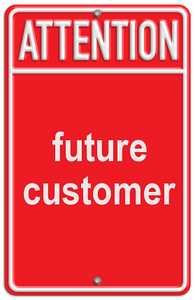(Part One of Three)
Influence People
using Messages, Email, Sales Letters, Advertising and Landing Page Copy
 I changed my mind. Cut me some slack!
I changed my mind. Cut me some slack!
As you can see those two phrases, when combined, grab your attention and then holds it.
Next week you will see those two sentences in ad copy around the world.
Incredibly potent phrasing that assures readership. Please don’t tell anyone.
Today: Persuasive Writing for ALL kinds of writing!
But I really DID change my mind about this article. But the more I considered the significance of persuasive writing in the worlds of Facebook, Post It Notes, letters, Twitter, speeches, advertising, the more I realized that you should know the reasons persuasive message FAIL and WHAT TO DO TO FIX THOSE FAILS.
The genesis of this article was when I looked at some copy one of my new Inner Circle Members presented to me. And then he said this to me.
[Kevin, I’ve been writing copy for eight months and I am selling almost nothing. WTH is wrong with me?]
I printed out the copy.
It turns out, my Inner Circle Member asked the right question. This IC Member has a cool and absolutely unique service in the professional services sector. The copy he wrote is actually very similar to standard copy in the industry and that is why it fails. It was almost completed swiped. (all that for another day)
This specific member is absolutely brilliant … genius, in fact. So it should be easy enough for him to write a persuasive message, right?
If it were easy, then copy writers would be millionaires. 99+% don’t eek out a living. Really. And it really is not their fault.
Who Has Ever Shown You How to REALLY Compel Others?
Yeah…it is just not…so easy.
Nowhere at University do they teach how to write ANY KIND of persuasive messages.
You can get a Masters Degree in Marketing or Business and NEVER learn to write a persuasive message.
And nowhere on the planet that I am aware of, do they train evolving techniques and tactics for crafting persuasive messages.
Here’s the deal:
Tragically, you will learn more in this article today (granted it’s a BIG article)than you will at any University about persuasive writing.
Remember, I cannot show you grammar or parts of speech. For writing persuasive messages, honestly, everything you were taught that matters, really does not matter.
Those people are all at University.
Today you learn how to write to compel, convince, and cause changes and actions to be taken.
I want to show you how to improve your writing of ANY persuasive message by perhaps 500%.
I will use copy writing as an example, but the concepts run to all types of messages.  I have always found “Search Engine Optimization” to be fascinating.
I have always found “Search Engine Optimization” to be fascinating.
SEO is talking to google and convincing google you are a great guy. It is work to communicate with an algorithm butIf you are able to think in big pictures AND be detailed in your thinking you can get into googles mind and therefore cause people to come to your website.
If you have a great product or service, people will see what it is you represent or who you are.
BUT, a high-value product and buckets of highly targeted traffic won’t get you anywhere unless you can convert those browsers into excited buyers. The tool, of course, for someone in marketing, is a well crafted high-response sales letter.
The same principles that apply to sales letters apply to writing Post It Notes, letters from home, your next book, and every persuasive message you will ever write.
As I mentioned, I’m writing this weeks article for my Inner Circle Member and you get to look over my shoulder. This is not entirely altruistic on my part. I need to save my client. I need you to have an open ear to Influence: Boot Camp and I want to have an excellent issue of Coffee with Kevin Hogan for tens of thousands of people.
While you peek, I’m going to do something else for you, as well. I’m going to highlight specific areas of knowledge that I would only share at Influence: Boot Camp or at our Inner Circle meetings. You can read that as, “Kevin doesn’t put EVERYTHING out there in the public.”
Imagine that.
Once you understand WHY something is effective you can learn a principle that applies to EVERYTHING you do.
They Don’t Know What YOU Know
Your FIRST problem is that YOU already KNOW PRECISELY how valuable your product/service will be to your future customers and today’s readers.
You’ve worked on it for weeks/months/years, researching the market and creating amazing stuff.
But your prospects have no clue what your product or service is. They have no idea how valuable it is in contrast to other remotely similar offerings on the market. They don’t know how their life is about to change. They know … nothing.
Think about this:
Your reader and possible future customer is not as close to the project as you. And they’re looking at it from an entirely different perspective.
Here is a Key CONCEPT: YOU have NO IDEA what your reader is seeing when they look at you, your products or services and definitely absolutely nothing about the copy or persuasive message they are reading. You are almost 100% ignorant.
YOU know what YOU are seeing from the point of view of the Writer/Creator, that’s YOU.
While you’re thinking about what’s “in it for you,” your prospective customers/clients are unconsciously deciding if there is ANYTHING about you that is in some meaningful way similar to them.
They are thinking about what your service will do for them.
And that’s why you need to create a persuasive message, a captivating and compelling sales page, in this case, for example.
Your sales page (persuasive message) spells out all the benefits your customers will receive when they use your service.
This is important, but so basic, that it’s like showing someone how to take a breath.
All writers have been taught this concept. It’s not gold or platinum. But it is silver.
What IS gold?
This is the first thing the gurus won’t show you: What matters in YOUR WRITING, is generating an identification between the reader and you or your message/product/service.
Think of the last time you went to a concert that had thousands of people in the audience.
When you write your message you want it to be just like the entertainer on stage. THAT is what matters MOST in writing.
IDENTIFICATION.
NOTHING is more important to your success in business or life than understanding how to help others connect with you and ultimately identify with YOU.
AFTER this critical step, then comes the more traditional aspects of persuasive writing.
The sales page/copy/message also shows prospects that the value of you/your product far outweighs the cost of the service/product. And your persuasive copy pushes your prospects emotional buttons while helping them justify the purchase rationally. (Not in red, but certainly a kindergarten rule of thumb.)
Here are 5 simple (POST IDENTIFICATION) steps to creating persuasive messages, and I’ll often us (as an example) a high-converting sales page.
- Step #1: Understanding Your Audience.
- Step #2: Grabbing Attention.
- Step #3: Hooking the Reader.
- Step #4: Making Your Reader’s Knees Buckle.
- Step #5: Getting the Reader to Buy Now.
Looks pretty easy right?
Check it out and find out what no one has ever told you.
Big mistake we all make writing persuasive messages… Even world class persuasive writers and copywriters screw this up every single day …
Step #1: Understanding Your Audience
 People constantly want to know the “right words and sentences” that are necessary to write a persuasive message.
People constantly want to know the “right words and sentences” that are necessary to write a persuasive message.
This means the writer is thinking about their Self and not the other person.
This writer loses.
Even marketers often create a sales page without first digging deep inside their prospects’ heads and getting to REALLY know them.
The scientific term for this behavior is: STUPID.
Yep, a BIG mistake.
Persuasive Writing begins with REALLY KNOWING your customer. (yes I will explain) It ends with understanding the value you can provide that customer. Period.
Know Thy Customer…but for real.
If you are communicating one on one, you should know EVERYTHING about your reader.
Yes, you want to have generalized ideas of who “your customer” is…but I’m really talking about the things that cause people to do business with you, care about you, be interested in you.
Here is how you and I MUST think. If we fail, we might as well just throw random words at a chalkboard and hit “Send.”
If I were looking for an audience, I would begin with libertarian thinkers. (Political concept)
The libertarian is a responsible person. They are wise with how they earn, spend and keep their wealth. The libertarian is fiscally conservative. They believe in freedom. They are private. They do not interfere in other people’s lives. They do not provoke. They are intelligent and quick to point out that they are NOT oriented to either traditional political party.
Obviously I have many, many Democratic and Republican customers. But if I had to pick a “type” of person, it would be the libertarian thinker/reader/customer/client.
And that is the mind I prefer communicating with.
 Therefore that is one target market I consider when I write Coffee with Kevin Hogan.
Therefore that is one target market I consider when I write Coffee with Kevin Hogan.
Another target customer is my international client and customer.
50% of Coffee readers (and Kevin Hogan Channel listeners) do not live in the United States.
This is very important. Most people in my niche areas write solely to an American audience. And that is just fine by me. I often tell stories and share experiences from Italy, Switzerland, Poland, Czech, Australia, and Great Britain; for example.
These experiences are often difficult to wrap your mind around if you have never been out of the U.S.
But the U.S. is not always easy to identify with if one lives outside of the walls… I mean the U.S. borders.
Now this is important. GET THIS: I just poked fun at Republicans. I have twice as many conservative customers and clients than liberal customers. So why poke fun at such a big part of my readers?
Because I poke fun at myself and people don’t identify with Kevin Hogan based on immigration issues. If I poked fun at being careful with money, I would not be true to myself or my typical reader. The fiscally conservative individual, or the person who WILL BECOME oriented this way, IS my customer.
She believes in the value of ongoing learning and is judicious when it comes to blowing money on short term pleasures.
This is the GENESIS of “my client.”
But this is not my client. These are broad generalizations.
I REALLY like to know my clients. They connect with me on Facebook, for example and know that I am a friend. Not a public figure to be “followed,” necessarily but a friend. It’s not possible to respond to everyone who might comment on Facebook but it’s certainly nice to LEARN about my readers from the comments they make on my Facebook page.
Now I have information that is more than useful.
Jenna loves horses.
Rob loves to travel and go on cruises.
Steve is as politically aligned with me as any human on the planet.
Mark has radically conservative beliefs and ideologies that I love to both agree with and sometimes spar against.
Allen has co-written a couple of articles for you. He’s a staunch radical libertarian thinker. (The definition of radical is someone who is “more libertarian than I am.”)
Clare is an organic environmentalist from whom I have learned a great deal about ecological issues.
Dan is a geologist and is a former democrat, not really a present “anything” but is always focused on the good in others.
These are all real people that have been reading Kevin Hogan for a long time.
I like to know far more than this about as many customers and clients as I possibly can.
My readers tend to be loyal, often to a fault… but wouldn’t change from their faithfulness unless forced.
You want to know …everything about your customers and clients.
This is not about “technique and tactic” but about really UNDERSTANDING your client. I need to know that I can be of great value to someone or I do NOT want the relationship. If someone buys a few programs and doesn’t become a long term connection, that is fine. But I prefer the long term connection to those just passing through.
This is counter to how MOST people think of their customers.
Most marketers want to sell hamburgers to hungry people.
But that’s not how I look at life or business. And you should know that the way I look at life isn’t pleasurable for all people.
I share ideas, thinking, processes, life strategies, persuasion techniques, to people who are bright enough to use the golden thinking for good and not causing others harm.
And that means because I care, I know my customer. I don’t strategically think, Geez’ I need to write Rob’s wife name down. I don’t. I will remember it and reference her from the visit they had to my home, for example.
 But it doesn’t hurt to think about all this at the tactical level.
But it doesn’t hurt to think about all this at the tactical level.
Perhaps you are early in your business career or your new business is young.
Go ahead, think tactically.
In no time you will begin to have a deeper understanding of your client and customer.
Learn their kids names, the clients birthday, her hobbies, her favorite things to do, political leanings, what her relationship is like with her husband. It should all by stored on a 4 x 6 card or in your computer. This can be helpful because it’s easy to forget the name of a spouse, the family pet or their favorite car.
Once you CARE about the other person…once you realize they have real life experiences like sickness, death, pain, happiness, joy, pride and so on, they will see you and sense you as THE RIGHT PERSON to be with/do business with.
It’s not always easy for people in all businesses to learn this kind of intimate information about their customer. It may not be practical for some.
This means that you can pull the magnifying glass back and substitute a lens that brings a wider angle and more general understanding of clusters of your clients.
I’ve found basic psychographics to be useful at helping others understand their customers.
Simple psychographics can go a long way in comprehending how means and desires drive behavior.
Psychographics are not everything but if you just look at two aspects of psychographics, you can almost read minds. These two specific psychographics are “where” means to ends meet lifestyle desires.
In other words, is this person ecofriendly, organic and natural? (We call that societally conscientious.) This person is as concerned about the future of the globe and the food they eat more than they are about their own personal future.
These people are evangelical in nature but on average you don’t see them in church very often. But they are good, trustworthy, honest and loyal people. Thus I have a strong bond with many societally conscientious individuals even though politically I might be living in a very different world.
Don’t focus so much on differences when thinking about your clients. Instead think in terms of similarities.
Are they achievers?
Do they strive to achieve but generally fail (or have failed to date)?
Are they makers? Do they make their living by making/servicing/fixing things?
I’ve always found it easier to persuade people like me. I’m kind, skeptical, self optimistic, other pessimistic, a hard worker, pretty sharp, prefer functionality to form. It’s not hard to figure out what psychographic category I belong to. This is important for you to think about because it means if I am your customer, others like me, are likely to be interested in you (your work) as well.
 But hey! I’m more than those “traits.” My entertainment choices speak to what truly interests me as well. On television I enjoy Game of Thrones, Survivor, The 100, Big Bang Theory, Pro Football, MLB Baseball, Pawn Stars, Modern Family. I secretly enjoy, Voice! When under stress or very happy, I listen to McCartney or Heart, for example. I enjoy ancient TV shows like The Dick Van Dyke Show and Star Trek. So that’s me.
But hey! I’m more than those “traits.” My entertainment choices speak to what truly interests me as well. On television I enjoy Game of Thrones, Survivor, The 100, Big Bang Theory, Pro Football, MLB Baseball, Pawn Stars, Modern Family. I secretly enjoy, Voice! When under stress or very happy, I listen to McCartney or Heart, for example. I enjoy ancient TV shows like The Dick Van Dyke Show and Star Trek. So that’s me.
The entertainment you take in is what you are doing in “free time.” So think about this for a minute. When you could do ANYTHING, what ARE you doing?
What about your family members?
You’re going to meet me in two weeks. Maybe you also like Game of Thrones and Big Bang.
These connection points are simply possible bridges from meeting me on my landscape, which is the ONLY LANDSCAPE (to you as a person in business) that matters and bringing me to Your Solution Scape.
In fact, If you wanted to sum up the life experience of communication it would happen in the previous paragraph. You are not trying to evangelize your favorite television show to ME. You want to meet me in my world and then bring me to something where you need agreement.
Your task is to figure out who I (your client) am.
But if I’m here to persuade you about something, I need to know YOUR problems, your frustrations, your irritations. I need to know what ticks you off. I need to know what makes you feel better, even happy. I need to know your ability to decide (are you on your own or do you have to call home?).
I really want to know what you are afraid of because fears propel you and me to do SOMETHING. Your hopes, or a hope I install in you, is where that SOMETHING becomes THIS THING.
The more you know about them, such as their desires and fears, the easier it is for you to persuade them to buy your service.
So, how do you crawl inside your prospects’ heads, when you aren’t standing next to them?
Become Your Customer
You start by spending time with them both online and offline. Eavesdrop on their Facebook conversations. Join the discussion online in forums and blogs. But DON’T stop with conversations; get out there and take action. DO SOMETHING.
If you’re teaching golfers, then live on the golf course. If you’re teaching marketers, then master marketing. If you’re teaching a weight loss class, have a trim body.
In effect, become a part of the group you’re seeking to understand. When you learn by doing, you’ll better understand their frustrations, fears and motivations.
It’s impossible to know too much about the people you will serve.
How to speak directly to your customer …
Step #2: Capturing Attention
Now it is time to grab the pen or keyboard.
In general, With every persuasive message I write EXCEPT sales copy, I prefer to ask a question like, Whats happening in life/business? This would be instead of How are you?
People do NOT think in terms of all the good things that are happening right now.
They think in terms of problems and stresses.
Whats happening, is nice to get the person into one groove, one story. By connecting there we reduce resistance.
But you do not have to ask what they are doing.
You can instead focus on the likely emotion/feeling of the moment.
For example:
John,
I know I am catching you in the middle of something but maybe that is OK for two minutes.
Or:
John,
I bet you are swamped right now. I have an idea that might help relieve some of that pressure you are under, for real.
Or:
John,
I know you can not be happy after seeing what happened to the market yesterday.
Or:
John,
I saw on Facebook that your son had a graduation party with what looked like 100 people there. How did you manage such a big group?! (I am not asking how the party was.)
Or:
John,
I saw you on Facebook and I saw you were in Italy. What is it like driving on those tiny roads!?! (I will not ask how he liked the beautiful scenery because it was what he already showed me on Facebook.)
Or:
John,
I saw you on Facebook, how are you liking that new haircut? People responding positively? Seems like it fits you.
My pen is now on paper and the first thing I think is Fear then Relief.
This is the starting point after a very quick opener.
Fear then Relief
The only two sets of feelings/emotions that seem to work better than Fear/Relief are Disgust then Joy. A third that tests well is greed then hope, though I rarely use this in persuasive writing.
Specifically this means that I am going to write a little story that triggers a feeling of fear which will ultimately finish with relief or triumph.
Telling a story, in writing, with ONE EMOTION is boring, and will not likely be persuasive.
For example,
John, I have great news (news) and you will be happy to hear (this and that) and this will allow you to (do this) which will give you (result) cool???!!! Call me.
Answer?
Delete, no. Boring. No memory of seeing the message/letter.
Now let us look at a sales letter. It is a little different but we use similar principles.

Create the Perfect Headline
Begin by creating an attention-getting headline.
I changed my mind.
Right?
It’s not just cool, it says, I WAS WRONG!
Get it?
A great product that is going to be incredibly valuable for your prospect is about to gain a new fan.
Let’s be clear: The headline is the most important part of your sales letter. That’s because it has the job of grabbing your readers attention and virtually directing them to start reading your sales letter. So if your headline doesn’t get attention, then the rest of your letter is worthless since no one will read it.
KEY POINT: Because your headline’s job is to capture and hold attention, you should NOT try to sell your service or product in the headline.
That’s because there simply isn’t enough room in a headline to build value for a product and then persuade your prospects to buy.
No way.
Example: Imagine if you walked onto a car dealer lot and a sales person rushed you, pressed a set of keys into your hand, and yelled, “BUY THIS CAR!” What would you do? You’d probably beat a hasty retreat off the lot and make a mental note to never visit again.
Your customers and future customers are the same way. In fact, they are JUST LIKE YOU.
Simply put, you’ll (rightfully) scare them off if your headline tries to close the sale.
So instead, use your headline to grab attention by putting forth the biggest benefit of your product or service.
And whenever possible, your headline should invoke curiosity to keep your prospects reading.
Features VS Benefits
Before we go further, let’s take a moment to talk about the difference between benefits and features (this distinction though elementary is still important).
Features are the parts of your product.
Benefits are what those parts do for your customer.
Here’s the thing …
Most of your customers don’t care all that much about the features.
For 95% of potential buyers/people/humans it’s about IDENTIFICATION and THEN BENEFITS.
Experts in a niche/field thrive on comparing features. Everyone else wants and needs to know the benefits.
Your prospect is primarily interested in benefits (what your product can do for them).
Now, you may think that merely listing the features of your product would be good enough, since an intelligent reader will figure out the benefit of those features. But plenty, frankly most, of your readers simply won’t make the connection.
So don’t make them think and figure it out for themselves. Instead, make it easy on them by telling all about the benefits.
One benefit is that a) doing so virtually eliminates information overload and analysis paralysis. Another is that b) they can take home cutting-edge strategy and tactics and apply them immediately in their business or personal life to make more money or have more fun with the person they want to have fun with!
Example #2: Someone else is doing something much simpler, they are teaching a weight loss class. A feature of a weight-loss class is that one of the lessons talks about diet supplements. The benefit to the student is that she will discover which supplements can help her peel off the fat even faster (and which supplements are bad for her health).
See the difference?
Solve Their Problems Quickly & Easily
The second thing your prospects are looking for are fast and easy solutions to their problems. If you can reasonably and accurately promise a quick, easy and painless solution, then promise it in your headline.
For example, you never see ads that say, Lose all the weight you want in the next three years! Instead, you see ads and headlines that promise, How to Lose 10 Pounds Quickly and Easily.
Some persuasive message strategy and secrets? …
Use Trigger Words
No. Do not use Trigger Words in a Post It Note. Do not use trigger words (as a rule) in a message to a loved one about dinner tonight.
Use trigger words in sales copy, advertising and marketing.
Tip: Most prospects respond to “trigger” words or cues in headlines.
Try to incorporate one or more of the following trigger words:
- how
- how to
- secrets
- discover
- find out
- introducing
- revealed
- announcing
- free
- you
- quickly
- easily
- amazing
- revolutionary
Use Copywriting Strategy
Finally, you can arouse curiosity to compel your prospects to keep reading. The best way to do this is to promise a benefit, but don’t tell prospects how, exactly, they’ll receive that benefit.
As an example, a headline for a course might say something like:
“Here’s a Quick and Easy Way for You to Lose an Extra 7 pounds This Month by Getting an Extra Hour of Sleep Each Night!”
That’s an ok headline.
But the problem is, I spilled the beans up front by telling readers they can get extra weight loss by getting more sleep.
Instead, consider the following headline that is a bit more mysterious:
“Here’s a Quick and Easy Way for You to Lose an Extra 5 Pounds This Month by Using the Hogan Plan … It takes ZERO effort … Yet Hardly Anyone Uses this Proven Strategy!”
See the difference?
The fact is that extra sleep causes weight loss. Less sleep almost always is linked to weight gain.
I didn’t tell the reader what the strategy is, but I did put forth a big benefit (5 Pounds). If the reader wants to find out how they can enjoy that benefit, then they’ll need to keep reading.
Tip: Notice that I used the result of 5 pounds per month (versus saying from 3 – 7). That’s intentional. You see, the more specific you are about facts and figures, the more credible your sales letter is perceived to be. The more credible your figures, the more likely it is your prospects will believe you. And that directly results in a better conversion rate.
Interesting side bar?
When people set goals of setting 3 – 7 pounds vs. the specific 5 pounds, they tend to achieve their goal more often with the range! (Influence needs to be understood in principle.
Swipe Proven Headlines for Your Use
Here are three headline old but remarkably stable templates you can use for your letter:
“Who Else Wants to [insert benefit here]?”
“Discover the Secrets of [insert benefit] Without [nasty side effect]!”
“Finally! Here’s How to Quickly and Easily [insert benefits here]!”
These are all proven templates that still cause people to read your copy. Sometimes the older “master” headlines have run their course and will never be useful again. Other times, in some niches and fields … the long proven templates are still found to be effective!
Next week? Captivating and Holding the Reader until they say “yes.”






















